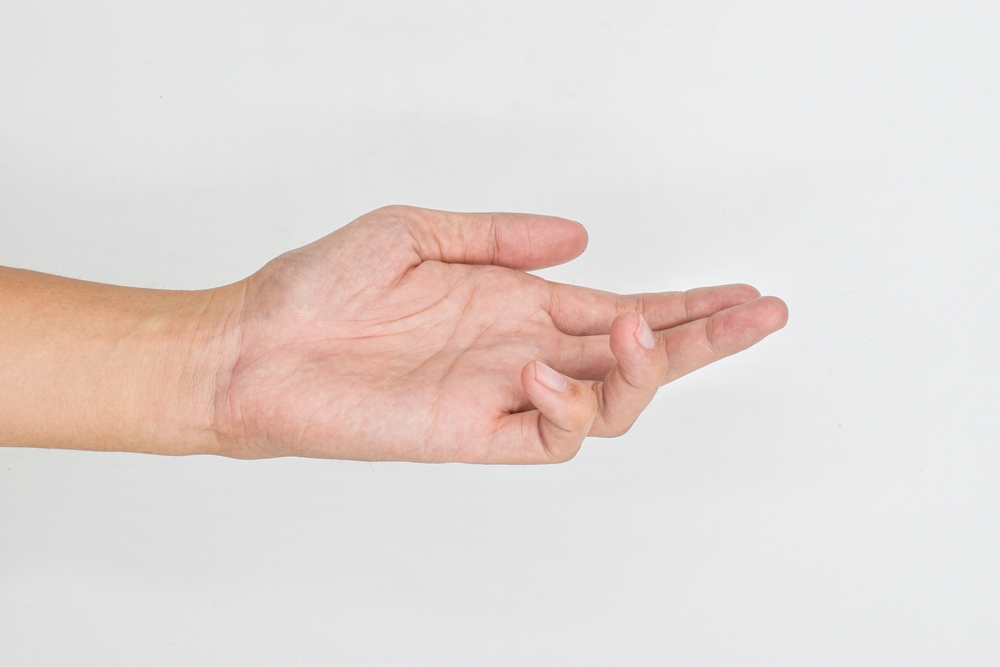Dupuytren’s Contracture Non-Surgical Needle Treatment
Dupuytren’s contracture (DC) is a disorder of people of Viking descent. It is characterized by excessive collagen production, which results in nodules and cords in the palms which stretch into the digits, in particular the ring finger. If left untreated, it may lead to flexion contractures of affected fingers, reduced joint mobility and a risk of hooking injury (e.g. in a lift or a railway train door). Fibromatosis may also affect the soles of the feet (Lederhose plantar fibromatosis), the penis in men (Peyronie’s disease) and the knuckles (Garrod’s knuckle pads).
Treatment of Dupuytren’s contracture by needling (non-surgical needle aponeurotomy or fibrotomy) offers a walk-in walk-out local anaesthetic treatment. Typically the patient can drive home afterwards and continue with all usual activities the following day. We will teach you the aftercare stretching exercises that will help you.
Dr Christopher Rowland Payne, our founder, is the UK’s most respected authority in the field of Dupuytren’s contracture treated by needling. He has helped hundreds of Dupuytren’s patients.
Dupuytren’s contracture non-surgical needle treatment is a safe, minimally invasive and effective treatment performed by a very limited number of doctors in the United Kingdom. Our patients have experienced great success from the procedure and consistently expressed satisfaction with the results.


Consultation
- Detailed history of your skin concern
- Total skin examination
- Holistic assessment of your health
- Diagnosis
- Discussion of treatment options
- Personalised treatment plan
- Treatment
FAQs
Dupuytren’s contracture (DC) is a disorder of people of Viking descent. It is characterized by excessive collagen production, which results in nodules and cords in the palms which stretch into the digits, in particular the ring finger.
See answer

Dupuytren’s contracture mainly affects the ring and little fingers. You can have it in both hands at the same time. It tends to get slowly worse over many months or years. Treatment cannot usually help in the early stages. It starts with lumps, dimples or ridges on your palm. Eventually, your finger may get stuck in a bent position.
See answer

Dupuytren’s contracture happens when the tissue under the skin near your fingers becomes thicker and less flexible.
The exact cause is unknown, but it’s been linked to:
- having a family history of the condition
- smoking
- drinking lots of alcohol
- having diabetes or epilepsy
It’s not known if you can prevent it or stop it coming back.
See answer

Risk factors for Dupuytren’s contracture include:
Age. Dupuytren’s contracture occurs most commonly after the age of 50.
Sex. Men are much more likely to develop Dupuytren than are women. In men, symptoms may be worse and progress more quickly.
Ancestry. People of Northern European descent are at higher risk of the disease.
Family history. Dupuytren contracture often runs in families.
Occupation. Some studies show a connection between Dupuytren contracture and workers who use vibrating tools.
Diabetes. People with diabetes have an increased risk of Dupuytren contracture.
Tobacco and alcohol use. Smoking tobacco and drinking alcohol both increase the risk of Dupuytren contracture.
See answer

Dupuytren’s contracture gets worse slowly, over years. The condition begins with a firm lump in the palm of the hand. This lump might be a little tender, but usually isn’t painful. Over time, the lump can extend into a hard cord under the skin and up into the finger. This cord tightens and pulls the finger toward the palm, sometimes severely. Dupuytren’s contracture most commonly affects the two fingers farthest from the thumb. The condition often occurs in both hands.
See answer

Dupuytren’s contracture non-surgical needle treatment is a safe, minimally invasive and effective treatment performed by a very limited number of doctors in the United Kingdom. Our patients have experienced great success from the procedure and consistently expressed satisfaction with the results.
See answer

Treatment is always tailored individually to each patient and includes creams, tablets, peels and deep extractions. Patients need to be monitored regularly to achieve the swiftest and best outcomes.
See answer



